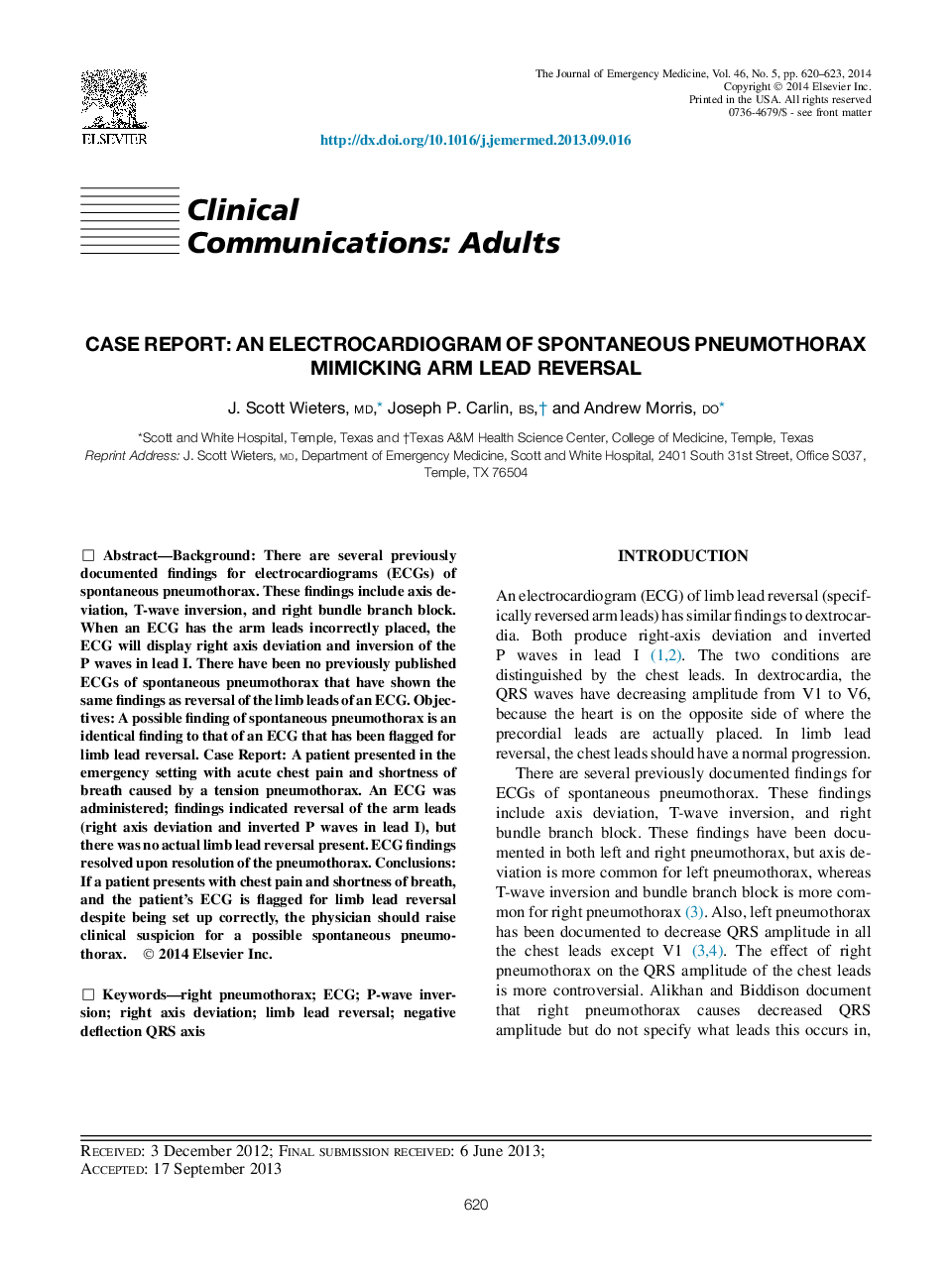| Article ID | Journal | Published Year | Pages | File Type |
|---|---|---|---|---|
| 3247518 | The Journal of Emergency Medicine | 2014 | 4 Pages |
BackgroundThere are several previously documented findings for electrocardiograms (ECGs) of spontaneous pneumothorax. These findings include axis deviation, T-wave inversion, and right bundle branch block. When an ECG has the arm leads incorrectly placed, the ECG will display right axis deviation and inversion of the P waves in lead I. There have been no previously published ECGs of spontaneous pneumothorax that have shown the same findings as reversal of the limb leads of an ECG.ObjectivesA possible finding of spontaneous pneumothorax is an identical finding to that of an ECG that has been flagged for limb lead reversal.Case ReportA patient presented in the emergency setting with acute chest pain and shortness of breath caused by a tension pneumothorax. An ECG was administered; findings indicated reversal of the arm leads (right axis deviation and inverted P waves in lead I), but there was no actual limb lead reversal present. ECG findings resolved upon resolution of the pneumothorax.ConclusionsIf a patient presents with chest pain and shortness of breath, and the patient’s ECG is flagged for limb lead reversal despite being set up correctly, the physician should raise clinical suspicion for a possible spontaneous pneumothorax.
